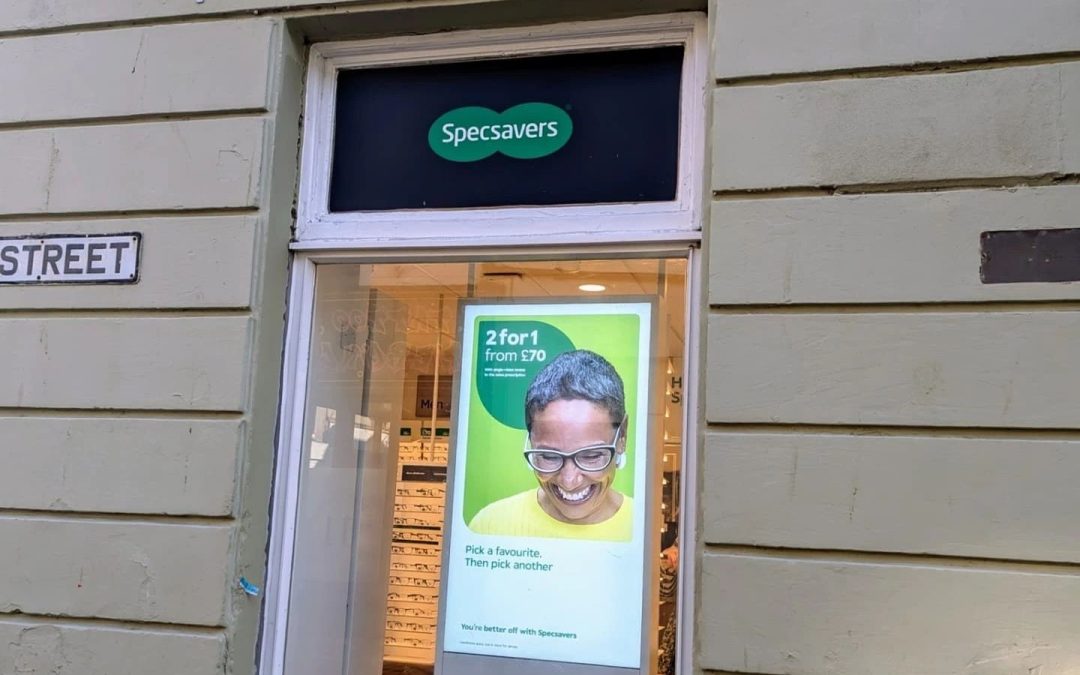In a digitally driven world, where communication, presentation, and entertainment happen across screens and speakers, AV integration has emerged as a crucial backbone of both business and lifestyle infrastructure. Whether it’s an office boardroom, a retail showroom, or a living room, AV integration ensures all your audio visual equipment works together harmoniously.
According to AVIXA, the global AV industry is set to exceed £250 billion by 2025, a testament to its growing importance. At DN Audio Visual, we’ve helped countless businesses and households in the UK discover the benefits of audio visual system integration, from Glasgow to everywhere in between.
But what exactly is AV integration? Let’s take a deeper look.

What is AV Integration?
AV integration, or audio visual integration, refers to the process of designing, connecting, and configuring audio and visual technologies into one cohesive and functional system. Rather than treating each piece of AV equipment as an isolated component, integration ensures they all work together, intelligently and intuitively.
It’s the difference between having five remotes for five devices versus one streamlined control interface that manages everything from a touchscreen or mobile app. It includes planning layouts, selecting the right audio visual equipment, installing hardware, configuring software, and ensuring seamless performance across all platforms.
Unlike basic AV installation, AV integration focuses on long-term functionality, user experience, and system flexibility – whether it’s for a home AV installation or a complex commercial AV installation.
What Does an AV System Do?
An AV system combines various audio and visual components into a structured setup that enables efficient communication, display, collaboration, and automation. These systems can serve multiple functions depending on where and how they’re used.
Here’s how AV systems operate across different environments:
- In Offices: AV systems power meeting rooms, video conferencing setups, wireless screen sharing, and presentation tools.
- In Homes: AV systems deliver cinema-quality entertainment, multi-room audio, and home automation control.
- In Classrooms: Interactive whiteboards, projectors, microphones, and speakers foster engaging and dynamic learning experiences.
- In Shops & Restaurants: Digital signage, background music systems, and menu boards create immersive customer environments.
The core job of any AV system is to ensure your message, whether spoken, displayed, or streamed, reaches your audience clearly, consistently, and professionally.
Why is AV Integration Needed?
Technology, while powerful, can be incredibly frustrating when it doesn’t work properly or efficiently. Many organisations still rely on fragmented setups, incompatible devices, poor cabling, weak connectivity, and outdated interfaces, resulting in wasted time and low productivity.
AV integration solves these problems by:
- Eliminating Compatibility Issues: Every device is selected and configured to work within the same ecosystem.
- Simplifying User Experience: Intuitive control systems make it easy for anyone to operate the tech, no more calling IT just to start a meeting.
- Boosting Reliability: Professionally integrated systems are far more stable and less prone to crashes, glitches, or interference.
- Future-Proofing Investment: With scalability in mind, your AV system can grow and adapt alongside your organisation.
Ultimately, AV integration empowers you to make technology work for you, not against you.
Fields Where AV Integration Shines
Audio visual technology has become essential across many sectors in the UK. Here’s how different industries benefit from audio visual installation services:
Corporate Offices & Boardrooms:
AV integration transforms outdated meeting spaces into dynamic collaboration hubs. From conference room AV installations to enterprise-wide control systems, companies can enable seamless presentations, hybrid work models, and video conferencing.
Education Sector:
Classrooms today are smart. Schools, colleges, and universities use AV systems for interactive learning, real-time collaboration, lecture capture, and remote teaching. Integration ensures content is easily accessible for both teachers and students.
Retail & Hospitality:
In stores, integrated AV setups are used for ambient music, video walls, and promotional content. In hotels, AV systems manage everything from check-in kiosks to in-room entertainment and event spaces.
Healthcare Facilities:
Hospitals and clinics benefit from AV for telemedicine, patient entertainment systems, digital noticeboards, and training facilities. Integration ensures security, hygiene, and reliability in high-stakes environments.
Residential Homes:
Homeowners are embracing smart living. From whole-home audio to hidden projectors and voice-activated controls, AV integration turns a house into a connected experience.
Religious & Community Spaces:
Integrated sound system installations, live streaming, and digital displays help reach congregations both in person and online.

What AV Technologies Should Businesses Consider?
Choosing the right audio video installation equipment requires careful planning. Here are key technologies UK businesses should consider:
- Unified Communication Systems: Zoom Rooms, Teams Rooms, and other platforms can be integrated with high-quality mics, cameras, and control panels to enable seamless remote meetings.
- Digital Signage: Display live data, news, marketing content, and announcements using digital signage controlled via central systems, a must for retail and hospitality.
- Control & Automation Systems: Systems from brands like Crestron, Extron, or Control4 allow users to control AV, lighting, climate, and security from one interface, ideal for smart offices and homes.
- High-Quality Audio Systems: Professional-grade microphones, amplifiers, and speakers ensure speech clarity and immersive sound. Don’t underestimate the importance of quality audio cables.
- Commercial Security & Alarms: Integrate alarm systems, surveillance, and access control with your AV infrastructure for a complete safety and communications network.
An experienced audio visual installer like DN Audio helps you determine which solutions will future-proof your space while meeting your current needs.
How Can AV Integration Help a Company?
AV integration isn’t just about having nice screens and speakers, it’s a business enabler. Here’s how:
- Boosts Productivity: Time lost to technical errors during meetings is a common frustration. Integrated systems remove barriers, allowing teams to focus on what matters.
- Improves Communication: Whether internally or with clients, clear audio and visual delivery ensure messages are understood and retained.
- Supports Hybrid Work: With staff working across different locations, AV systems bridge the gap through remote collaboration tools, video conferencing, and shared digital workspaces.
- Enhances Brand Image: Visitors, clients, and staff perceive tech-savvy spaces as professional, trustworthy, and forward-thinking.
- Reduces Costs Over Time: Though the initial investment may be higher, reduced downtime, lower maintenance, and improved efficiency bring long-term savings.
AV Installation vs AV Integration – What’s the Difference?
Here’s the distinction:
AV Installation: This is the physical process of setting up audio visual equipment, such as mounting screens, connecting speakers, or running cables. It’s essential, but it doesn’t guarantee everything will work together smoothly.
AV Integration: Integration goes several steps further. It involves system design, compatibility checks, software programming, user training, and performance testing to ensure all parts work together as one.
Advantages of AV Integration
When working with expert AV integrators, you can expect:
- Fully Customised Solutions: Designed around your space, audience, and purpose
- Effortless Operation: Control everything with one device, from anywhere
- Enhanced Collaboration: Ideal for hybrid workforces and remote learning
- Reliable Infrastructure: Professionally installed systems are dependable and secure
- Remote Monitoring: Easily manage your AV estate across multiple sites
- Future Scalability: Systems can grow as your business or needs evolve
We’ve seen first-hand how our clients across the UK benefit from audio visual installation that simply works, day in, day out.
Disadvantages of AV Integration
While AV integration is a powerful tool, there are a few points to be mindful of:
- Higher Initial Cost: Integrated systems are more sophisticated and require careful planning, which reflects in the price.
- Planning Time: You’ll need to dedicate time upfront for consultation, design, and approvals.
- Need for Professional Expertise: AV integration isn’t a DIY job. Trying to “figure it out” can lead to costly mistakes.
- Technology Lifespan: Like any tech, components may require updates or replacements every few years.

Choosing the Right AV Integration Company in the UK
Not all audio visual contractors offer the same level of service. Look for an AV integration company that offers:
- Experience with both commercial AV and residential solutions
- Transparent, expert AV consultation
- Responsive, ongoing AV support services
- Proven case studies and client testimonials
If you’re searching for “audio visual contractors near me” or “audio visual companies UK”, we at DN Audio are here to help. We’re known as one of the top AV installation companies with deep knowledge of AV solutions and a hands-on, human approach.
Wrapping Up…
AV integration is more than a tech upgrade, it’s a transformation in how we work, live, and connect. Whether you’re looking to modernise your office, create a high-end home cinema, or streamline communications across a school or hospital, AV integration is the key to smarter, more engaging environments.
At DN Audio, we bring decades of experience to every project. From sound system installation to full-scale audio visual system installation, we provide end-to-end solutions that meet your goals today and grow with you tomorrow.
Ready to get started? Contact DN Audio Visual for your AV consultation, and experience the future of connected spaces.

